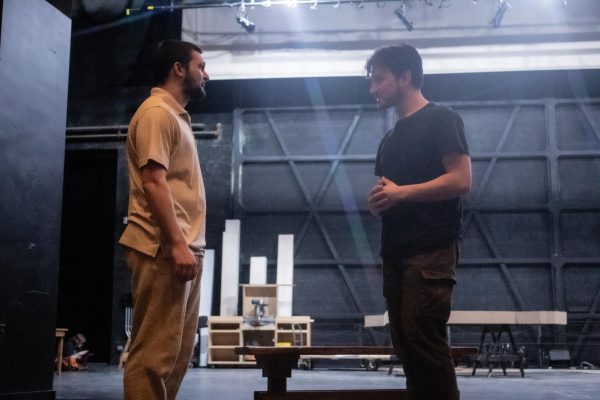MECC hosts event around photo exhibit
Baldwin Wallace’s Middle Eastern Culture Club (MECC) hosted a discussion event on Nov. 16 about the photo exhibit currently on display in Ritter Library.
The exhibit, entitled What We Carried, has been in the lobby and first floor stair landing of Ritter Library since its opening on Sep. 14. It features a collection of photographs taken by freelance photographer Jim Lommasson of items brought to the U.S. by Syrian and Iraqi refugees. On each photo, the owner of the item wrote a brief story or message about the item in either English or Arabic. A translation into the other language is provided next to each frame.
The participants in the discussion perused the photos, then sat together to discuss their thoughts and reactions. A list of questions was provided, with the discussion being primarily led by Clara Harb, president of MECC. Middle Eastern cuisine was also provided for the participants.
“I really enjoyed getting to talk to such a diverse group of people,” Harb said. “It was really exciting to me, to see how interested [in the exhibit] people were.”
The discussion occurred two months after the opening of the exhibit. Hana Najm, secretary of the Muslim Student Association, said that she appreciated the amount of timebetween the exhibit’s opening and the discussion.
“I think [it] gave people time to go to the exhibit, see all the pictures, [and] understand what the pictures were trying to say,” said Najm. “Also, we already had an opening to the exhibit with the man who created [the exhibit], Jim Lommasson, and I think that having that, and a little bit later having a follow-up to what people thought the exhibit brought to their lives was the main goal.”
The discussion came back repeatedly to the human element of the exhibit. Many people commented on how the personal and relatable items and stories shed a humanizing light on the refugee situation. Lommasson had previously commented that the part of the exhibit that was most important to him was “having real connections to the stories” and to “see how similar we are” as opposed to seeing refugees as “other”.
“[The exhibit] really is about breaking down stereotypes and showing common humanity,” said Lommasson. “People always say, ‘you did a good job humanizing them.’ They’re already human. We don’t need to humanize humans.”
At one point in the discussion, each participant shared what they would bring with them if they had to leave their homes behind. Many people mentioned photographs of family and friends, others mentioned items related to specific memories and loved ones, and still others mentioned items with more general ties to home and their pasts.
“Someone said they’d take their cat. We laughed, but it’s interesting to see what matters to people of my age, in my community, and comparing it to what the refugees thought,” Harb said.
The exhibit will remain on display in Ritter Library through Dec. 15.
The Exponent is looking for financial contributions to support our staff and our newsroom in producing high-quality, well-reported and accurate journalism. Thank you for taking the time to consider supporting our student journalists.













































